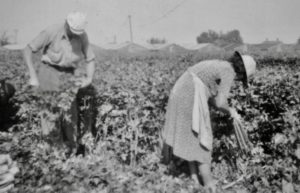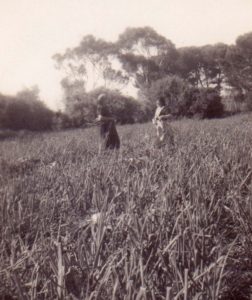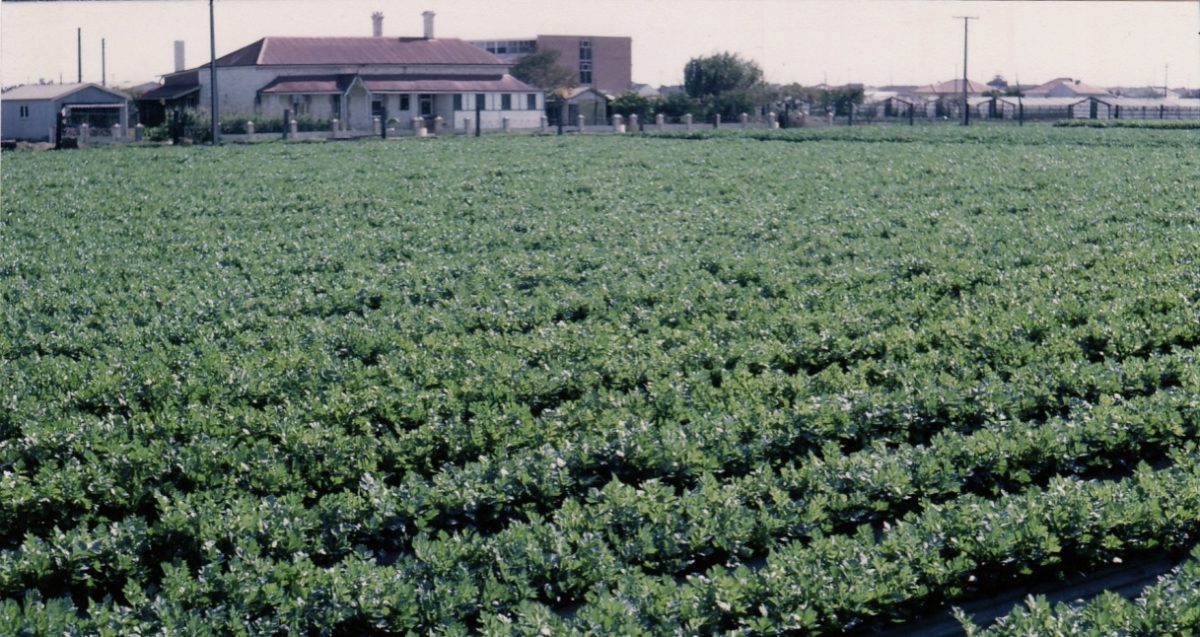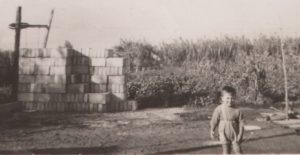
Land for the pioneer Veneto market gardeners was essential. They came from contadino (peasant farmer) families who had worked the land for generations. Some families in the Veneto villages owned land. Others worked for land-owners in the mezzadria system which required families who lived in a kind of feudal arrangement to give half of the produce to the land owner each year. The contadini grew corn, wheat and grapes in the Veneto region.
In Australia, the dream was to own land and to be independent. Most of the veneti began buying their land after the war ended. In their interviews the sons and daughters of the pioneers remember details of the family market gardens in Kidman Park and Flinders Park. Some families had three or four acres and others had more land, up to 18 acres. A number of families bought land north of Adelaide in the 1960s.
In Adelaide, the Veneto market gardeners had to adapt their practices and find out what worked in the climate and what vegetables the market needed. They grew tomatoes in glasshouses – a new approach for the veneti.

The market gardeners used the same vertical strings to grow and train beans as the tomatoes ripened. In the 1950s market gardeners sent most of their tomatoes to Victoria. Outside vegetables included onions, carrots, peas, trombone, marrows and potatoes. Celery was very successful in the rich soil near the River Torrens. The market gardeners gradually introduced other vegetables such as cucumbers, lettuce, capsicums and artichokes.

Women and children had important roles in the family market gardens. Lina Campagnaro remembered her work in the glasshouses as a child: “I had the job of the low rows so it was my job and I always remember doing French knots on those tomato plants. It was very interesting because I’ve never forgotten that knot to this day. That was one of the jobs and that was done after school or in the holidays or weekends.”

Women worked in the gardens and also in the house and cared for children. One of the interviewees suggested that the women worked harder than the men!
Interviewess recall the efforts of their parents especially preparing for market days when they worked from early morning. In the early days, the market gardeners took their produce to the East End market by horse and cart, a trip of about eight kilometres. In summer, the days ended late with watering the vegetables. In winter when there was frost, the market gardeners got up during the night to protect the tomatoes in the glasshouses.
Adrian Tonellato, Frogmore Road c 1951. Courtesy: Assunta Giovannini
Madeleine Regan
4 August 2019
Terreno e lavoro

Il terreno per gli orticoltori pionieri veneti era essenziale. Queste persone venivano da famiglie che avevano lavorato la terra da generazioni.
Certe famiglie nei villaggi veneti possedevano terreno altri, invece, lavoravano per i padroni. Lavoravono con il sistema di mezzadria che ogni anno dovevano dare metà del raccolto ai padroni.

In Australia il sogno di questi veneti era quello di possedere il terreno ed essere independenti. Molti veneti cominciarono a comprare il terreno dopo la Seconda Guerra Mondiale. Nelle interviste per il progetto, i figli e le figlie dei pionieri ricordano i dettagli del lavoro che si faceva in famiglia come orticoltori a Kidman Park e Flinders Park. Certe famiglie avevano 3 o 4 acri ed altre ne avevano di più fino ai 18 acri. Un certo numero di famiglie comprarono terreno al nord di Adelaide negli anni 1960.

In Adelaide i veneti orticoltori hanno dovuto cambiare i loro modo di lavorare perchè il clima era diverso e la gente voleva diverse verdure. Coltivarono pomodori nelle serre e questo era un nuovo approccio per i veneti. Quando i pomodori erano maturi gli orticoltori usavano le stesse spaghi per far crescere i fagiolini nelle serre.
Durante gli anni 1950 spedirono i loro pomodori in Victoria. Le verdure che coltivarono fuori dalle serre includevano cipolle, carote, piselli, zucche e patate. Il sedano cresceva molto bene nel ricco terreno vicino al fiume Torrens. Gli orticoltori gradualmente introdussero altre verdure come cetrioli, lattuga, pepperoni e carciofi.

Le donne e bambini avevano un importante ruolo nelle famiglie degli orticoltori. Le donne lavoravono negli orti ed anche si curavano delle proprie famiglie. Una persona intervistata ha suggerito che le donne lavoravano molto più degli uomini!

Certe persone intervistate ricordano che lavoravano nelle serre quando erano nelle scuole elementari. Si ricordano anche dello sforzo che i genitori fecero specialmentnet quando loro preparavano le verdure da vendere al mercato East End con cavallo e carrello. Il mercato era distante circa 8 chilometri. In estate le giornate erano lunghe perchè dovevano innafiare durante le notte. In inverno quando c’era la brina, gli orticoltori si alzavano durante a notte per proteggere il loro prodotto nelle serre.
Adrian Tonellato, Frogmore Road c 1951. Cortesia Assunta Giovannini
Madeleine Regan
4 August 2019

